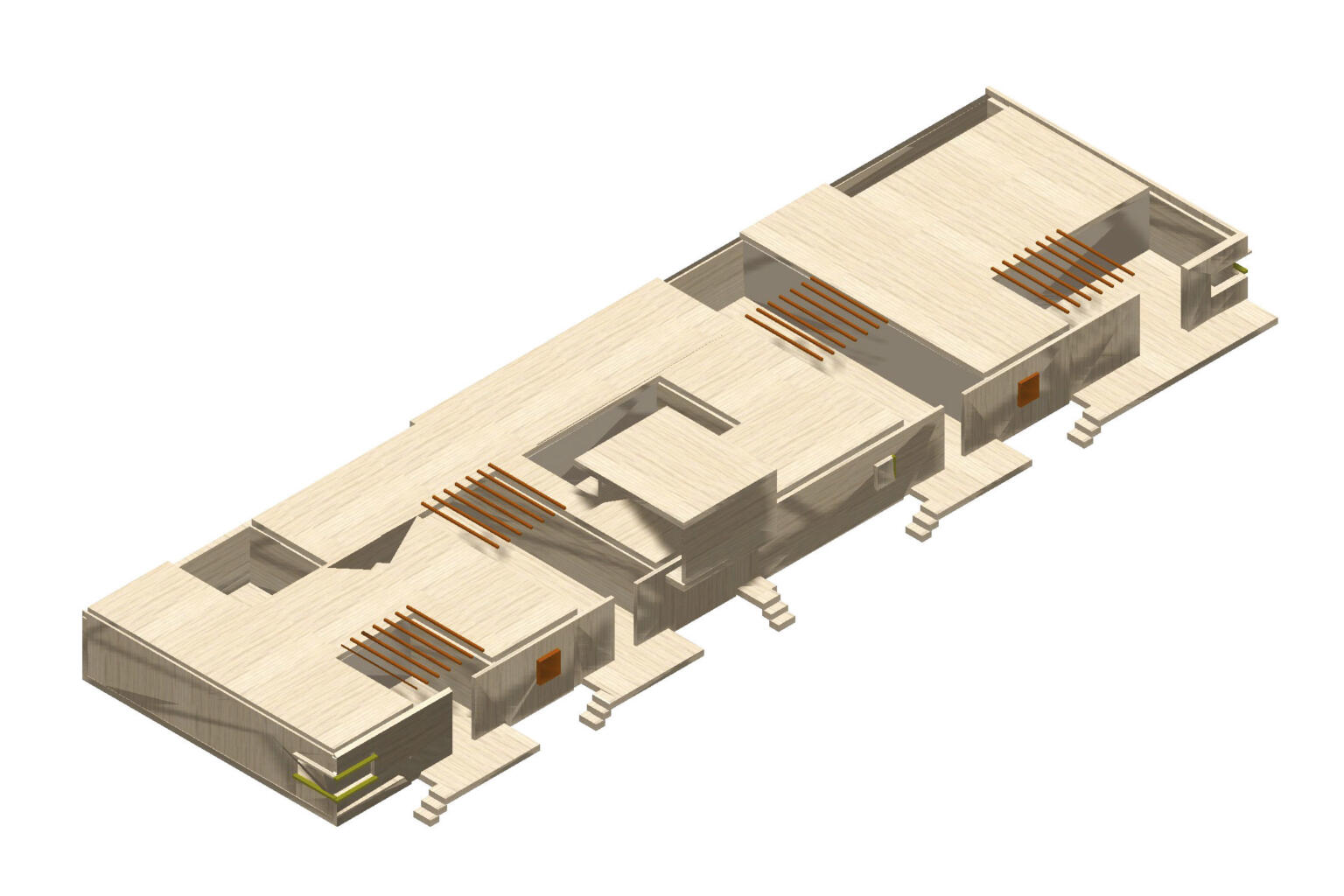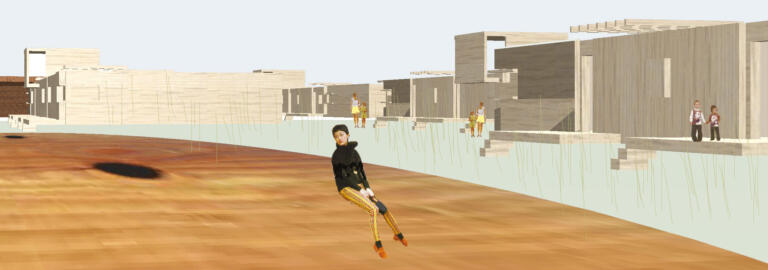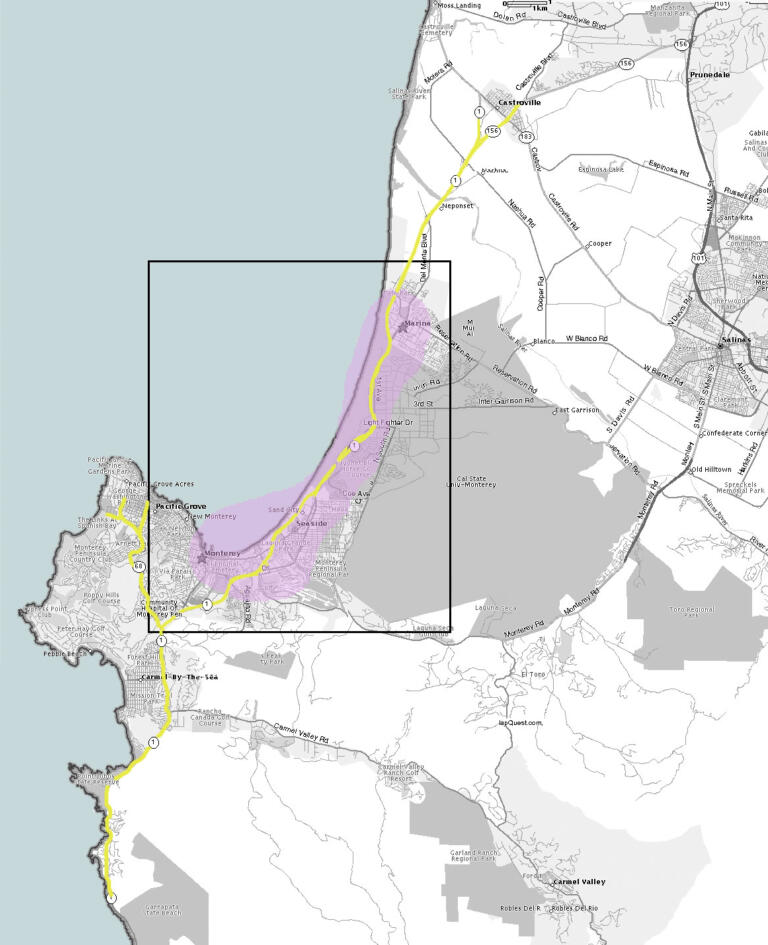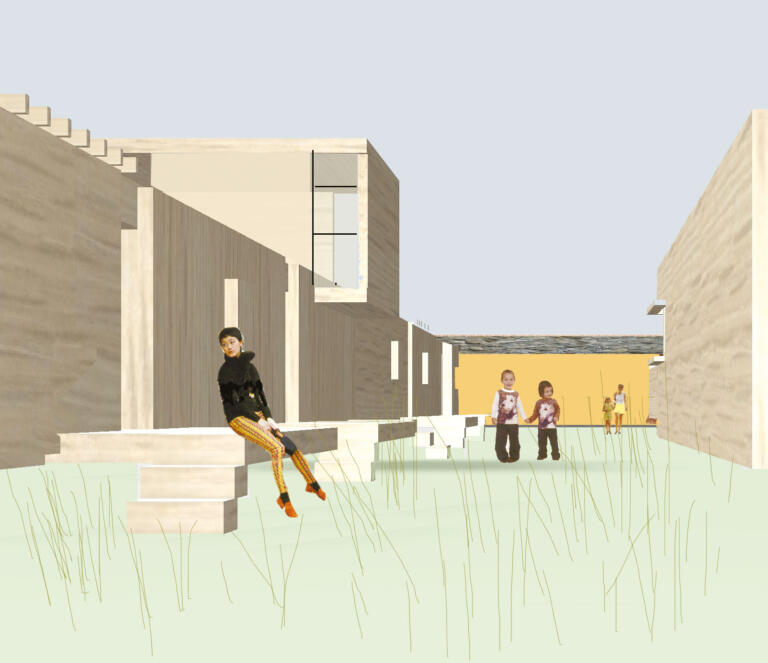
MONTEREY HOUSING COMPETITION
The choice of site
This proposal is for the coastal cities of Monterey. Situated in an extraordinary landscape, the cities themselves, except for Carmel and Monterey of course, are not famous for their natural beauty, though they have great potential given their locations. Towns such as Seaside, Marina and Sand City seem to function as satellite cities for Carmel and Monterey but have grown too large and expensive to be just that. Though the cities are very different, we found one common denominator, namely the reliance on transport links, primarily, highways.
The brief suggests moving away from the use of cars and tries to encourage people to use public transport. However, the only available public transport system is buses, which rely on highways. The highway also gives a first impression of the town and landscape. Highway 1 passes the most extraordinary stretches of beach and parks near the sea. Unfortunately, buildings along the highway are uninspiring developments. Built cheaply and quickly, these developments are usually accompanied by large, inefficient car parks.
It thus seemed to make the most sense to use the highway, rather than ignore it, and create living and working centres off the highway, especially since the assignment was to think of a generic development which can be applied all over North America. The highway is an American institution, and has created new building typologies before.
Our proposal tackles the sites along the highways, and is an attempt to create good housing, in an (sub)urban setting, accessible to public transport. The scheme considers long-term sustainability as a vital part of the site since it utilizes what-is-already-there, and is not dependent on new infrastructure.
The scheme
The scheme consists of a long wall (up to 200 meters long, 6 meters high and 16 meters wide), as a buffer from the highway, in which parking, for people who do have cars, and cafés and shops, The architecture of the wall is neutral, the wall looks like a dike or a fortress, but roofs, signs and billboards can be added if desired by the community. In the end, the wall bends and along it, there is room for other functions, such as a school, a small theatre, a health centre, or a tourist centre.
In front of the wall, is a wooden platform, an element in itself, which is a public square, from there are paths to the different housing units. The square is set in a park-like landscape. The wall and the square, thus form a town centre people can interact with. Since they are close to the highway, buses will stop here as well, and in some locations, light railways can be implemented.
Around the square, housing blocks of fifty meters in length, by nine meters are loosely placed in the landscape. Each block consists of five houses. Each house has a different layout but consists of the same elements and is built around a patio. This means the blocks can stand quite close to each other to achieve high density (up to 12 units per acre). The houses are all one story high, except for one type, which is a studio house and has extra living space on the top floor. The density of the blocks can decrease towards the edge when the settlement would be close to the ocean. The houses can be extended with a backyard facing the ocean. The houses all have a small porch in front of their patio and are slightly raised from the ground, thus seeming to float in the landscape.
The housing blocks are made of wood and steel frames. The houses are standardised and can be easily assembled. Because they are raised there is not too much foundation work needed, plus minor slopes can be dealt with.
The scheme
The scheme has to be adapted depending on location, and according to the needs of the local community. Therefore the scheme forms a framework with key elements which fulfil the urban requirements of quality and infrastructure, but which are flexible, and can be modified where necessary. This proposal describes the elements of the scheme, and gives one possible scenario, for Sand City, where the highway is adjacent to the ocean.
Environment
On top of the wall, solar panels can be laid to provide part of the electricity for the neighbourhood. Lighting inside the parking area can be natural, and though glass fibres.
The landscape surrounding the houses is to be with grasses and plants, which do not need much water.
In the landscape dirty water and rainwater recyclers can be placed, the water from which can be used to flush toilets.


